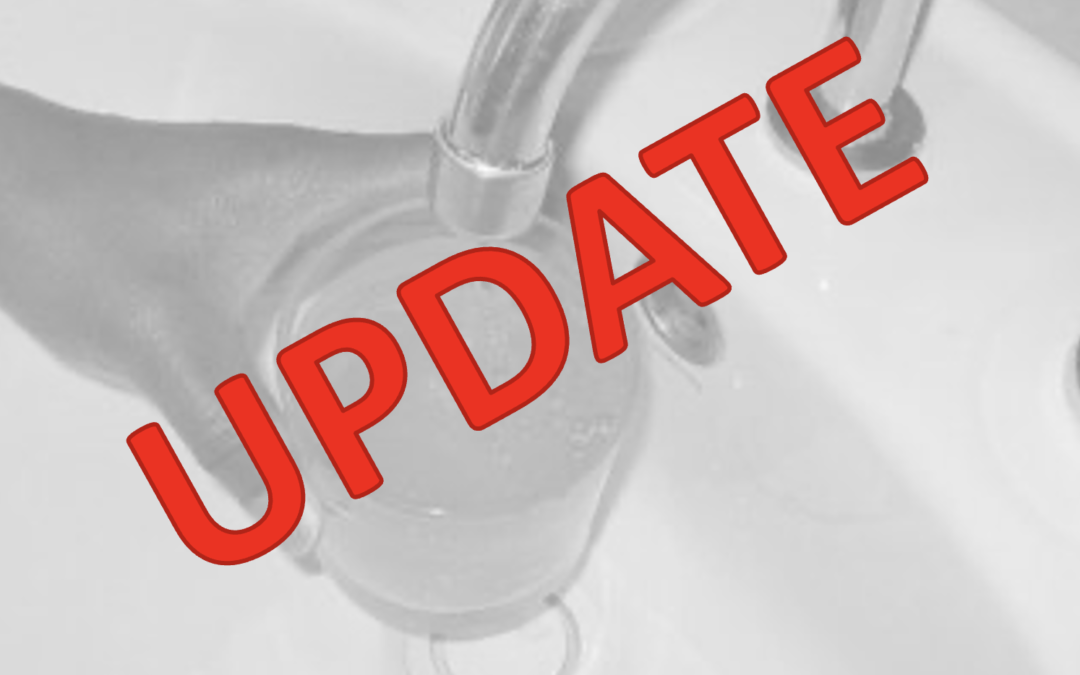Water Update
As of 1:00 AM, we see the water clearing in color.
Please check your watercolor after letting each COLD water faucet run for a few minutes. If you continue to see discoloration in your water after clearing your cold water lines in the morning, please email or leave a voicemail for the Water Commissioner. cweaver@villageoffonda.ny.gov or call 518.853.4335 x25. Be sure to provide the following:
- Name
- Physical Address
- Best Telephone Contact
- Current Water Condition – Discoloration or Other Experience
Basic Information as to how to troubleshoot discolored water
If your water is discolored, the Water Department can help. In most cases, discolored water is temporary and should clear in a few hours or less.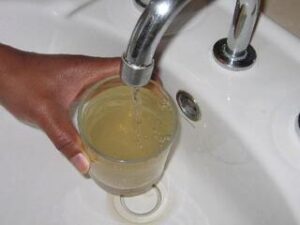
Discolored water can be caused by your home plumbing, water system maintenance in your area, or other water system activity in your neighborhood, such as fire hydrant use. People with discolored water usually describe it as yellow, brown, or rust-colored. Follow the steps below to determine the cause of discolored water, learn what you can do to resolve it, and know when to report it to us.
Follow these steps to determine if your home plumbing is the cause or if there is a discolored water event in your neighborhood.
Step 1: Compare hot and cold water.
If only the hot water is discolored: The color is likely from your water heater or pipes. Your water heater may need to be flushed or serviced. Sometimes, the color is from sediment inside the tank that has been temporarily stirred up. Copper or iron pipes that connect the water heater and the faucet can also contribute color. Depending on your watercolor, you will have different steps to take.
If only the cold water is discolored, or the color is appearing in both hot and cold: Go to Step 2 to determine the extent of discolored water.
Step 2: Check all faucets inside and outside your home, including toilets.
If you see discoloration at some faucets, but not all: You may have an issue with the plumbing in specific locations in your home, not with the water coming into your home from the street. Find tips below for the particular color you’re seeing.
If you see discoloration at all faucets, including toilets: The color is not from a specific location in your home. Go to Step 3.
Step 3: Run a cold water faucet for two to five minutes.
If running the water does not resolve discolored water: A discolored water event may have happened on your street or in your neighborhood. Find tips below for the specific color you’re seeing and report ongoing discoloration to the Water Quality Line.
If the discoloration clears quickly after you run the water: There may be an issue with the plumbing in your home, as the color resolved when you brought in fresh water from the water main (pipe). If your home has older plumbing, you may often see discolored water when you turn on the tap after it hasn’t been used for a while. Find tips below for the specific color you’re seeing.
The color stays even after you run a cold faucet.
This is typically due to a temporary discolored water event in your neighborhood. Discoloration can happen when water flow suddenly changes in your area, causing natural sediments inside water pipes to be stirred up.
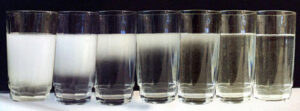
White water or milky water
Fill a glass of water and wait three minutes. If the water clears from the bottom to the top, the discoloration is just tiny, harmless air bubbles in the water. These air bubbles can form when the water temperature fluctuates, or more air is in the water. If hard white particles remain, or you find them clogging your aerator screens, the plastic dip tube inside your water heater may have failed, or there’s mineral buildup inside the tank. Place the particles in vinegar and wait a few hours—plastic from the dip tube won’t dissolve, but mineral buildup will. Your water heater may need maintenance or repair if white particles remain.
Blue, green, black, or white discolored water
 This is commonly caused by new copper plumbing or existing copper plumbing that is corroding. Run your faucet as needed to bring in fresh, uncolored water from the water main. Contact the Water Quality Line and ask for a water test kit that includes testing for copper. Copper is an essential nutrient but can be harmful in large doses.
This is commonly caused by new copper plumbing or existing copper plumbing that is corroding. Run your faucet as needed to bring in fresh, uncolored water from the water main. Contact the Water Quality Line and ask for a water test kit that includes testing for copper. Copper is an essential nutrient but can be harmful in large doses.
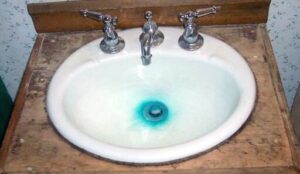
Pink or grey stains or slime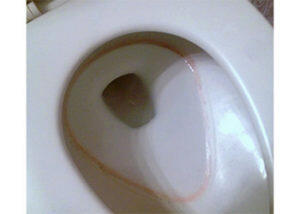
Bacteria cause this on surfaces in your home. These bacteria grow in moist environments. The bacteria commonly form small colonies in sink drains, create rings around toilet bowls, or appear on surfaces in the shower. These “biofilms” are like plaque that forms on your teeth, and you’ll want to clean toilets, sinks, and other moist surfaces regularly to keep them under control. Control humidity in your home and ensure good ventilation in bathrooms that have showers. Mold can also grow in these humid locations.

